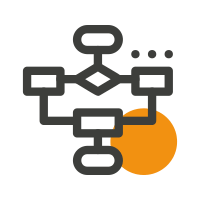Google Ads Pricing - How Much it Costs to Run Ads in Australia
Google Ads pricing guide
How does it Work?
Google Ads operates primarily on a pay-per-click (PPC) model, meaning you pay a fee each time only if your ad gets clicked on.
This system is part of what makes Google Ads an effective tool for driving targeted traffic to your website.
We show below how the pricing works.

Bidding Systen
Advertisers select a maximum bid amount they're willing to pay for a click on their ad. This can be set manually or through Google's automated bidding strategies.

Auction
Each time a Google user performs a search that triggers ads, an auction is conducted by Google. This auction determines which ads will appear for that specific search query and in what order.
Average Cost Per Click by Industry
| Industries | Min. Bid (AUD) | Max. Bid (AUD) |
| Insurance | $24.71 | $90.60 |
| Financial Loans | $19.93 | $73.07 |
| Mortgage Services | $21.21 | $77.75 |
| Legal Services (Attorney) | $21.18 | $77.67 |
| Credit Services | $16.23 | $59.51 |
| Legal Services (Lawyer) | $19.13 | $70.14 |
| Charitable Donations | $18.91 | $69.33 |
| Higher Education (Degree) | $18.28 | $67.01 |
| Web Hosting | $14.36 | $52.65 |
| Insurance Claims | $20.48 | $75.09 |
| Conference Services | $18.93 | $69.39 |
| Trading Services | $14.94 | $54.77 |
| Software Development | $15.88 | $58.23 |
| Data Recovery Services | $18.92 | $69.35 |
| Money Transfer Services | $13.44 | $49.28 |
| Gas and Electricity Services | $24.58 | $90.12 |
| Education Classes | $15.77 | $57.81 |
| Rehabilitation Services | $15.12 | $55.43 |
| Medical Treatment | $16.73 | $61.35 |
| Cord Blood Banking | $12.51 | $45.87 |
| Real Estate | $14.50 | $53.25 |
| Automotive | $13.50 | $49.50 |
| Travel and Tourism | $12.50 | $45.75 |
| E-commerce Retail | $11.25 | $41.25 |
| Food and Beverage Services | $10.50 | $38.55 |
| Event Planning | $9.50 | $34.95 |
| Digital Marketing Agencies | $9.00 | $33.00 |
| Entertainment Services | $8.25 | $30.30 |
| Local Community Services | $7.00 | $25.65 |
| Arts and Crafts | $6.25 | $22.95 |
what affects google ads pricing?
Typical Metrics that Affect PPC Pricing
Google evaluates ads based on several factors including
- click-through rate (CTR)
- relevance
- quality of the landing page.
This evaluation results in a Quality Score. A higher Quality Score can lead to lower costs and better ad placement.
Your actual CPC is determined by the ad rank of the next highest bidder divided by your Quality Score, plus one cent.
This means you might end up paying less than your maximum bid amount.
Advertisers can set daily budgets for their campaigns, ensuring they don’t spend more than they are comfortable with.
Costs can also be influenced by the ad format (text, display, video, etc.) and the placement of the ad (on Google’s search results page, on websites within the Google Display Network, etc.). You can view the different types of Google Ads here.
In competitive industries or for popular keywords, the cost can be higher due to more advertisers bidding for the same space.
should you run ads?
What can You Expect When You Run Google Ads?
Planning
- Leverage Google’s Keyword Planner to estimate bids for your target keywords
- Explore industry benchmarks to set realistic expectations for your campaign’s budget
- Use budget simulators to understand how changes in spend could impact your campaign performance
Managing Costs Per Click
- Improving your ads’ Quality Score by refining ad copy and landing page relevance
- Targeting less competitive, long-tail keywords to reduce costs
- Experimenting with Google’s bidding strategies to maximize ROI
Launching a Google Ads Campaign
- Define your campaign goals and target audience
- Allocate your budget across different campaigns and ad groups
- Understand the potential costs of targeting specific keywords or demographics through keyword research

Click Through Rate (CTR)
A good CTR indicates that your ads are relevant and appealing to your target audience. Which means you get better pricing in the long term. Aiming for a high CTR is a healthy goal since it encourages you to write better ads.

Ad Rank
Ad Rank in Google Ads is a value that determines the position of your ad in search results. There are only 4 top spots for Search Ads. Anything lower than that will not get you visibility. So you need to ensure bid amounts are sufficient to be in the top 4.

Management Costs
To work out your total marketing budget, ensure you include PPC management costs. This could mean managing it yourself (time), in-house staff (salary) or hiring an agency.

Measure Overall Returns
Instead of just looking at Cost Per Click - also measure your Cost Per Acquisition or Return on Ad Spend (for eCommerce). This ensures that you're ROI focussed, rather than cost focussed.
Understanding Google Ads is essential because it directly influences your online marketing strategy’s success. Here’s why:
Budget Management: Knowing the costs helps you allocate your marketing budget efficiently. Without this understanding, you could either overspend or underspend, both of which can derail your marketing goals.
ROI Calculation: You can only calculate the return on investment accurately if you understand all costs involved. This insight is crucial for assessing the profitability of your campaigns and deciding whether to scale up or down.
Competitive Advantage: Understanding the pricing helps in competitive keyword bidding. If you know the average cost-per-click in your industry, you can budget effectively to outbid competitors.
Strategic Planning: Different keywords and ad types have varying costs. By understanding the pricing structure, you can strategically plan which keywords to target or ad types to use, balancing between cost and effectiveness.
Remember, “Google Ads Pricing” isn’t just about the money spent; it’s about strategically using the platform’s robust capabilities to achieve your marketing objectives efficiently and cost-effectively.
Google Ads varies due to several factors, and it’s important to understand these to navigate the complexities of this advertising system.
Bidding Strategy: Google Ads operates on a bidding system. The more competitive your target keyword is, the higher the cost-per-click (CPC) you might need to pay to maintain visibility.
Quality Score: Google assesses your ads, keywords, and landing pages to determine a Quality Score. Higher scores mean lower costs and better ad positions, affecting overall pricing.
Ad Extensions and Improvements: Utilising additional features like ad extensions requires increased investment, affecting the overall cost of your campaign. However, they can significantly improve click-through rates.
Targeting Criteria: Broader targeting will encompass a larger audience, affecting cost. Niche targeting, based on location, demographics, or device, might reduce costs but limits reach.
Seasonal Trends: During high-demand seasons, more companies bid for the same keywords, driving prices up.
Understanding these variations helps in strategising and preparing for the fluctuations in ad pricing, ensuring you maintain a balance between cost and ad performance.
Google Ads Pricing isn’t just a single fee but a combination of various factors and choices you make during the campaign setup and management process. Here’s a breakdown of the components:
Keywords and Bidding: Your chosen keywords initiate the cost. Popular keywords come at a higher price. You’re bidding for ad placement in the search engine results, and depending on the competition, your cost-per-click (CPC) can increase or decrease.
Ad Quality and Relevance: Google rewards relevance and user experience. Ads that are deemed highly relevant to the searcher’s query and provide a good experience (from click to website interaction) are rewarded with a higher Quality Score, which can lead to lower costs.
Ad Extensions and Features: Using additional features within your ads, such as site links, location, or call extensions, doesn’t inherently cost more, but they can improve your ad’s visibility and click-through rate, impacting your overall costs due to increased interaction.
Campaign Settings: Your campaign settings are a crucial component. Targeting methods (like geographies, language, devices), ad scheduling, and ad delivery methods (standard or accelerated) can all impact costs.
Landing Page Quality: Not directly a part of Google Ads Pricing but indirectly influential. A high-quality landing page (fast, user-friendly, and relevant) contributes to your Quality Score, potentially reducing costs.
Understanding these components gives you better control over your Google Ads Pricing and helps you to manage your budget more effectively by making informed decisions in your campaign setup and strategy.
Predicting your daily costs with Google Ads can seem complex, but it’s essential for budgeting and expectation management. Here’s how you can get a handle on it:
Daily Budget Setting: Google Ads allows you to set a daily budget, which is the maximum you’re willing to spend each day. Google will stop showing your ads once this limit is reached, preventing unexpected costs.
Understanding CPC: Familiarize yourself with the average cost-per-click (CPC) in your industry. This knowledge helps set realistic budgets and anticipates daily costs based on the expected click volume.
Utilizing Google’s Forecast Tools: Google Ads provides forecasting tools that give you an estimate of your campaign’s performance based on your budget, bid, and targeting settings. This tool can help predict daily costs.
Historical Data: If you’ve run ads before, historical data is invaluable. Look at past campaigns for a ballpark figure of usual costs.
External Factors: Be aware of external factors like seasonality or market trends. A sudden increase in demand for keywords can spike your costs.
While predicting the exact amount is not foolproof, these strategies provide a foundation. By continuously monitoring and adjusting, you can have a level of predictability and control over your daily costs, ensuring your budget stays on track.
CPC, or Cost-Per-Click, directly affects your Google Ads campaign’s budget usage, ad visibility, and overall effectiveness.
A higher CPC can lead to better ad placement but will use your budget more quickly.
Balancing your CPC is key to getting good visibility while maintaining cost efficiency and maximizing your return on investment.
Efficiently managing your Google Ads cost requires strategic planning and continuous optimization. Here are actionable steps that can lead to cost reduction:
Focus on Quality Score: Google Ads operates on a reward system; the higher your Quality Score, the lower your cost per click and better your ad rankings. This score is influenced by your click-through rate, ad relevance, and landing page quality. Improving these aspects can significantly decrease your costs.
Use Negative Keywords: Regularly update your negative keywords list. These are terms for which you do not want your ads to appear. By adding negative keywords, you prevent spending on irrelevant clicks, ensuring your budget is exclusively for those who seek your offer.
Explore Long-Tail Keywords: These are less common, more specific keywords that are less competitive and, therefore, less expensive. They usually indicate higher intent and can bring in more qualified leads, offering better value for your money.
Adjust Bids for Geotargeting: Different locations can have different levels of competition and costs. Lower your bids in areas that don’t perform well and increase bids in high-performing areas to maximize ROI.
Schedule Ads for High-Performance Periods: Run your ads during specific hours or days based on your target audience’s active periods. If you’ve identified times with higher engagement or conversion rates, you might consider increasing your bids for these periods and lowering them at others.
Regular Monitoring and Optimization: Continuously analyze the performance data of your campaigns. Turn off low-performing ads, and try new variations to keep your ads fresh and efficient.
Implementing these strategies can significantly lower your Google Ads Pricing. It’s about being smart with your budget, focusing on bringing in the right traffic, and continuously optimizing for performance.
Yes, Google Ads cost can differ considerably by industry, primarily due to the variables below:
Competitive Landscape: In industries where businesses are heavily vying for the same keywords, the cost per click can skyrocket. Conversely, in sectors with fewer advertisers, the costs can be substantially lower.
Customer Lifetime Value: Industries where a single customer represents a high lifetime value (like legal services, insurance, or education) might see higher costs per click. Businesses are willing to pay more for clicks as each conversion could lead to significant revenue.
Seasonal Trends: Costs can also fluctuate depending on the time of the year. For example, the retail industry sees a spike in advertising costs during the holiday season due to increased competition.
Average Conversion Rates: Industries with higher average conversion rates tend to have higher CPCs because businesses are more confident about their return on investment. They are willing to invest more because they expect that the returns, in terms of customer acquisition, will justify the higher advertising costs.
Regulatory Environment: In industries that are heavily regulated (healthcare, finance, etc.), businesses often face higher costs. Strict advertising regulations and mandatory disclaimers can limit the number of players, but those who do advertise are usually established entities willing to invest more in customer acquisition.
Each industry comes with its unique set of challenges and market dynamics, which reflect in Google Ads Pricing. Understanding these factors within your specific industry can help in strategizing your campaigns and budgeting more effectively.
Understanding the performance of your Google Ads campaigns is crucial to your marketing strategy and overall business growth. Here’s how you can effectively track their success:
Conversion Tracking: This is the heart of your effectiveness measurement. By setting up conversion actions, you can track when someone completes a valuable action on your site (like a purchase or sign-up) after clicking your ad. This data shows what’s driving valuable customer activity.
Google Analytics Integration: By integrating Google Analytics with your Google Ads account, you gain access to detailed information about user behavior on your site. You can see what users do after they click on your ad, providing insights into user navigation, time spent on page, bounce rate, and much more.
Keyword Performance Reports: These reports show which keywords are driving the most engagement and conversions. By analyzing this data, you can adjust your keyword strategy, focusing your budget on high-performing keywords and reducing or eliminating spending on low-performance ones.
Click-Through Rate (CTR): This is a critical metric showing the percentage of people who click on your ad after seeing it. A low CTR might indicate that your ads are not compelling or relevant to the audience seeing them.
Return on Ad Spend (ROAS): This metric calculates the amount of revenue your business earns for every dollar spent on advertising. It’s a clear indicator of your campaign’s profitability.
Customer Match and Audience Performance: By using tools like Customer Match, you can target ads at your existing customers or lookalike audiences. Analyzing these campaigns can give insights into customer retention and loyalty strategies.
By regularly monitoring these metrics and others, you can have a comprehensive view of your campaign performance. This consistent tracking allows for timely tweaks and larger strategy shifts, ensuring your advertising budget generates the best possible return on investment.
Collaborating with a professional agency for your Google Ads campaigns can provide several substantial benefits:
Expertise and Experience: Agencies bring in-depth knowledge of Google Ads management, market trends, and effective strategies. They’ve worked with numerous clients and know what works and what doesn’t in various industries.
Time and Resource Saving: Managing Google Ads campaigns is time-consuming. An agency takes over this responsibility, allowing you to focus on core business operations. They handle the continuous tasks of monitoring, analyzing, and adjusting campaigns.
Access to Advanced Tools: Most agencies invest in sophisticated tools and software for market analysis, keyword research, and campaign management. These tools can be expensive and complicated, but agencies have both the resources to acquire them and the expertise to use them effectively.
Strategic Planning: Agencies don’t just manage your campaigns on a day-to-day basis; they plan for the long term. They help set achievable goals, forecast results, and develop a comprehensive online marketing strategy that aligns with your business objectives.
Performance Analysis and Reporting: Agencies provide regular, detailed reports about your campaign performance. They can interpret this data comprehensively, offering insights that might not be immediately apparent from the raw data.
Competitive Advantage: With their finger on the pulse of digital marketing trends and changes in Google’s algorithms, agencies can quickly adapt your campaigns. This agility keeps you ahead of competitors who might take longer to respond to market changes.
In essence, hiring an agency to manage your Google Ads campaigns can lead to more effective and efficient advertising. Their expertise, resources, and strategic approach can be invaluable in helping you maximise your return on ad spend.

